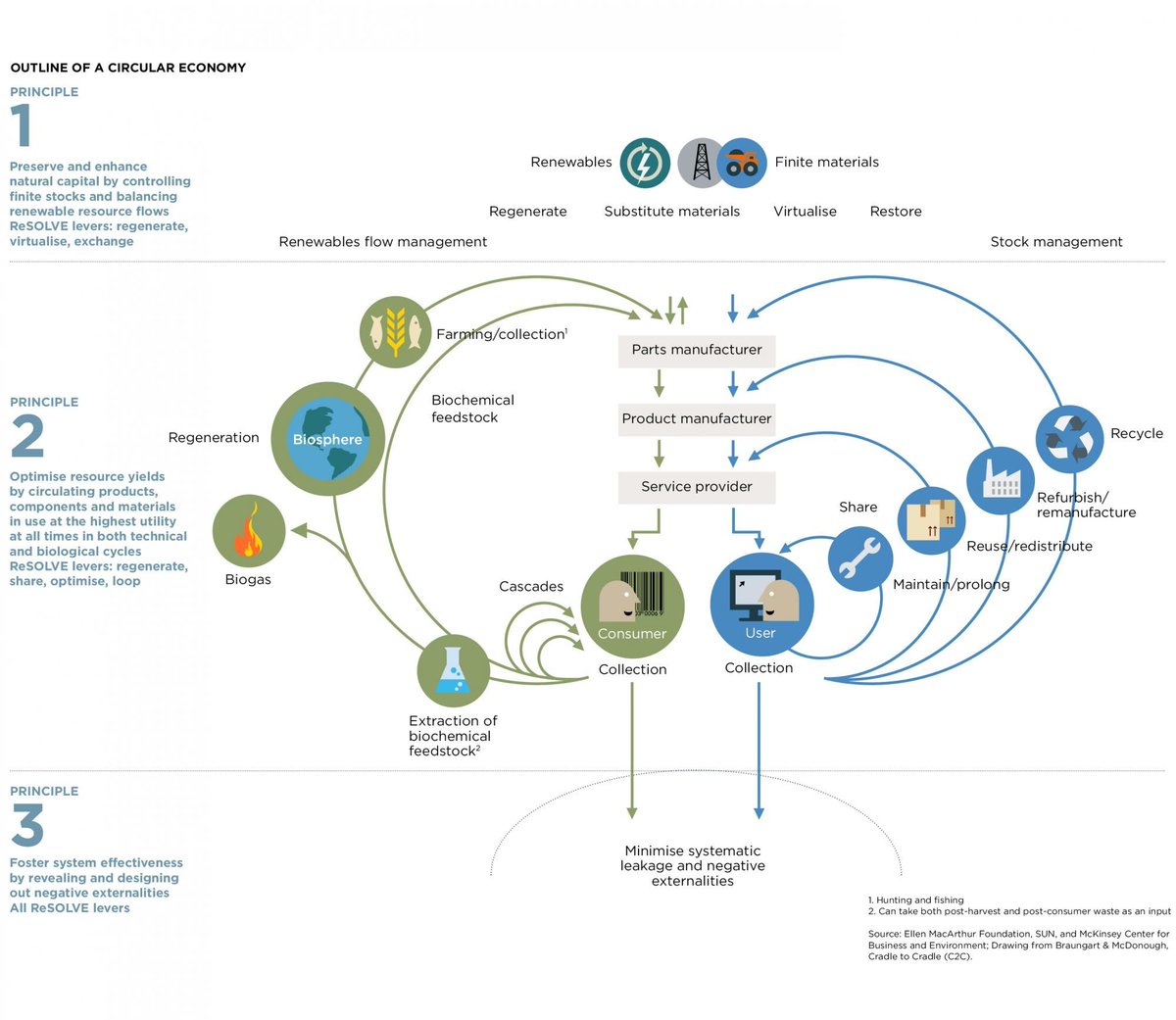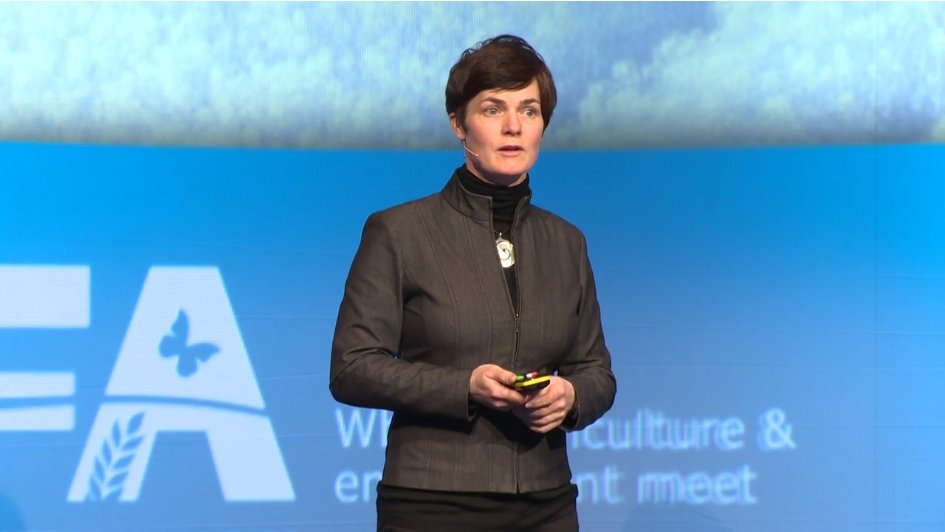What’s the size of the prize when it comes to global sustainability? According to research by Accenture, there is $4.5 trillion reward for achieving sustainable businesses by 2030. How to get there? Something called the ‘circular economy,’ which has been described as the biggest opportunity in the last 250 years for how we organize production and consumption in our global economy.
Revelation to Revolution
Single-handed circumnavigation of the globe gives you a lot of time to think. It was during her history-making voyage in 2005, where she broke the world record for the fastest solo circumnavigation of the globe (sailing more than 26,000 miles in just over 71 days) that the importance of finite resources and a circular economy became very real to twenty-eight-year-old Ellen MacArthur, and became her life voyage’s ‘North Star.’
After consulting experts in the private and public sector, she retired from professional racing, and in September 2010 launched the Ellen MacArthur Foundation, with the goal of ‘accelerating the transition to a regenerative, circular economy.’
Designing Waste Out
The dominant current global industrial model is linear and involves ‘take, make and dispose,’ and is inherently extractive in nature. A circular economy, however, is… well, circular. Meaning that it’s restorative and regenerative by design – think: ‘take, make, take, make, take, make.’ How does this happen? Relying on system-wide innovation, it aims to redefine products and services to design waste out while minimizing negative impacts.
Designing waste out sounds great, but when it comes to actually doing it, it may leave many folks thinking, ‘Easier said than done,’ which is why in January 2017 the Ellen MacArthur Foundation and IDEO launched a New Circular Design Guide during the World Economic Forum in Davos. The Foundation developed the guide with input from leading businesses and over 400 students and specialist design institutions. It includes 24 methods and a resource bank enabling change makers, entrepreneurial innovators, and students to get to grips with what the circular economy is, and enabling them to re-think value creation to develop more circular products, services and resilient, feedback-rich organizations.

Disruptive Technologies
Certain disruptive technologies facilitate scale for companies that would like to embrace the circular economy. Digital innovations in mobile, social, big data analytics, cloud, and machine to machine communication (M2M) are especially effective in connecting physical and digital channels. Modular design and 3-D printing are not only revolutionizing both product form and function, but also the length and nature of customers’ relationships with those products.
Some examples:
- Mobile technology facilitates the adoption of circular business models by enabling universal and low-cost access to data and applications. AI powered mobile browsers like Ulli will make mobile browsing genuinely mobile– a timely development since 75% of Internet use is predicted to be mobile this year.
- Social technology is foundational to sharing. Utilizing existing technology such as Facebook reduces development costs as it allows you to tap into existing networks. User/consumer feedback loops are built in making it quick and easy both to respond, and to take feedback on board for product or service improvement. Silicon Valley investor Roger McNamee has described this leverage of existing technology as a “Test The Timely Technology” approach. This approach can of course also be applied in a circular economy context. “Look at what the technology that other people are creating allows you to do in your business. Find some way to leverage what they give you for free, and then find some way to use the stuff that doesn’t cost very much to get some level of competitive advantage,” McNamee advised.
- Big data analytics is key to the circular economy as many companies will generate their revenues from product use instead of sales, and growth will rely on how good they are at understanding and catering to product use behavior. This means companies need to monitor and analyze data in entirely new ways. For example, Fluentd – open source software for data collection invented by Treasure Data – is used for Pokemon GO’s back-end data collection of every catch. “Some others use our technology to cross-pollinate across heterogeneous data sets – Uber, Netflix, Yahoo! among others. Facebook also uses it in some things,” elaborated Bill Tai, venture capitalist and first backer of Treasure Data. “6 trillion data points are captured every month for customers, that help drive everything from car engine analysis, to which people see and meet on dating sites, as well as purchase recommendations on Wish.com. There are so many fun things being done with our technology. Truly exciting to see it applied in so many ways. Some pure entertainment, others pure productivity, some unlocking knowledge,” he added.
- With a modular design, when a product breaks, only the defective part is replaced or repaired, keeping the product relevant to its users longer and extending its overall product lifecycle. In line with circular economy thinking, w.r. yuma sunglasses are designed for disassembly so they can be easily taken apart for repair or recycling.
- 3-D printing facilitates repair by making it possible to directly print suitable parts with the exact geometry of the original’s. It also disrupts manufacture, as in the case of w.r.yuma where 3-D printing is used to turn plastic waste into premium sunglasses. Opportunities for circular inputs are also created, along with inputs that are biodegradable or infinitely recyclable. “We are on a mission to reduce plastic waste by 3-D printing quality sunglasses. We need a radically new way of thinking about the future of waste,” emphasized Sebastiaan de Neubourg, founder of w.r.yuma.
Stepping up to the Plate
The so-called “triple bottom line” – a concern for people and planet (there is no Planet B) along with profit aka future-proofing growth – is why multinationals, as well as startups, are stepping up to the circular economy plate.
In February this year, Unilever expressed its commitment to the circular economy, announcing that by 2025 all of its plastic packagings will be either reusable, recyclable or compostable. Along the same lines, TIPA, a sustainable packaging tech startup from Israel, is trying to help us clean up our act by providing compostable, biodegradable packaging solutions for the food industry, while the previously mentioned w.r. yuma products are designed for disassembly so they can be easily taken apart for recycling.

